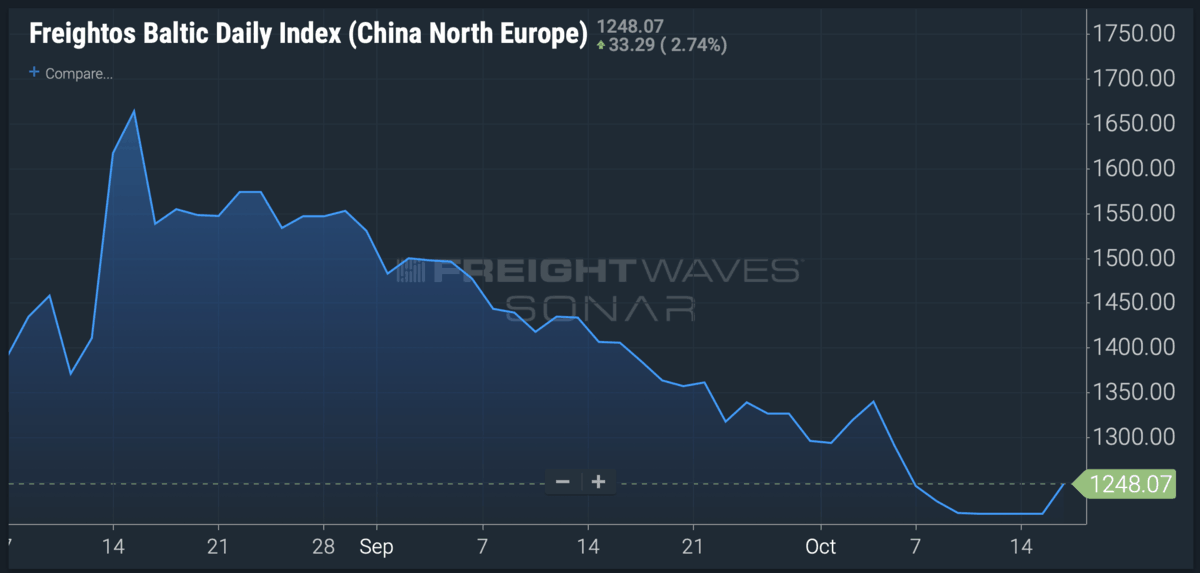
Calls for mandatory slow steaming and new marine fuel oil taxes to cut shipping’s carbon footprint are gathering steam. But so too, it seems, might be the ships – and, if so, the catalyst will be the introduction of environmentally friendly, low-sulfur IMO 2020 fuels, according to one box shipping analyst.
French President Emmanuel Macron recently called for mandated slow steaming and, earlier this week, one of his ministers called on the European Union to tax shipping bunkers. Yet new research from Alphaliner claims some container vessels could soon speed up as operators seek marginal gains on vessel speeds through fuel pricing plays.
The container shipping consultant believes the fitting of scrubbers on container ships to abate sulfur emissions and avoid using the low-sulfur IMO 2020 fuel that becomes mandatory Jan. 1 could induce some lines to offer faster services.
“Carriers that deploy scrubber-fitted ships could take advantage of cheaper bunker prices in 2020 and speed up services,” argued Alphaliner in its latest report.
The price of the heavy fuel oil currently in wide use in shipping is forecast to be heavily discounted from the end of this year because ships that are not fitted with scrubbers — the vast majority — have to switch to the more expensive 0.5% very-low-sulphur fuel oil (VLSFO) that complies with IMO 2020 regulations.
With heavy fuel oil currently available in forward markets at prices of less than $300 per ton — around $200 per ton lower than current prices for VLSFO — Alphaliner believes container lines with scrubber-fitted vessels could take advantage of the bunker price differential.
The number of containerships fitted with scrubbers reached 142 units with combined capacity of 1.14 million TEUs on Oct. 15, with a long line of ships currently being retrofitted or waiting to enter yards for retrofitting over the coming months.
“By January 2020, the headcount of scrubber-fitted containerships is expected to reach more than 260 vessels for a total capacity of over 2.30 million TEU,” said the analyst.
“This number represents some 10% of the global container ship fleet in capacity terms and it will continue to rise in 2020.”
Alphaliner expects overall capacity of the “scrubber-fitted world fleet” to hit 5 million TEUs by the end of 2020, creating more opportunities for lines to accelerate services assuming, of course, that bunker price differentials still offer an advantage to those with scrubber-fitted fleets.
“The 2M partners, Maersk and MSC, will have more than 35 scrubber-fitted ships of over 18,000 TEU by January 2020, with all 62 of their megamax vessels of capacity 18,000-23,600 TEU expected to be equipped with scrubbers by 2021,” it reported.
“This will allow the carriers to run some six Asia-Europe strings at higher speeds than currently, giving them a competitive edge over their rivals.
“Maersk and MSC are expected to operate a combined fleet of over 350 ships that will be equipped with scrubbers across all size segments by 2021,” Alphaliner said.
Of the other carriers, the OCEAN Alliance partners will have 20 scrubber-fitted units of 15,000-21,000 TEUs by January. These ships will, however, initially operate on mixed loops alongside conventional megamax units that are not equipped with scrubbers, according to Alphaliner.
Of the carriers in THE Alliance, Hapag-Lloyd has so far confirmed orders for 20 scrubber-fitted units, while Yang Ming will have 30 units. THE Alliance’s scrubber-equipped fleet will be boosted in April next year when HMM joins, adding its fleet of 53 scrubber-fitted ships, including 12 23,600-TEU newbuilds to be delivered from the second quarter of 2020, as well as a further eight new ships of 15,000 TEUs due in 2021.
More FreightWaves articles by Mike

